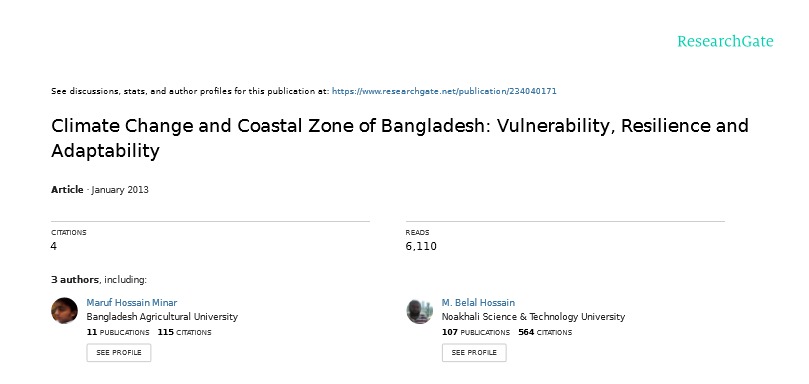Climate Change and Coastal Zone of Bangladesh: Vulnerability, Resilience and Adaptability

The coastal region of Bangladesh covers about 20% of total land area and over 30% of the cultivable lands of the country. It includes highly diverse ecosystems e.g. the world’s largest single tract of mangroves (the Sundarbans), beaches, coral reefs, dunes and wetlands. With its dynamic natural environments, provides a range of goods and services to the peoples of Bangladesh. It is agreed and documented that being a deltaic coastal country, Bangladesh is one of the most vulnerable countries to climate change in the world. Climaterelated change in coastal zones embodies potential additional stress on systems that are already under intense and growing pressure. The country has already been facing several climate change effects such as increasing cyclones, flood frequency probabilities, erosion, inundation, rising water tables, salt water intrusion and biological effects. Coastal environments particularly at risk include mangroves, tidal deltas and low-lying coastal plains, sandy beaches, coastal wetlands, estuaries and coral reefs. These bio-geophysical possessions will have consequent effects on ecosystems and eventually affect socio-economic systems in the coastal zone. The Sundarbans, most important ecosystem of the country will be totally lost with one meter rise in sea level. There are two options to minimize the impacts named mitigation and adaptation. It is needed to be considered both mitigation and adaptation options for Bangladesh, even though the country has very limited scope for mitigation. This is why mitigation involves global efforts to execute and adaptation is more local. As a result, effective adaptation policies and mitigation measures ought to be developed and implemented to minimize climate related impacts on Bangladesh.
- Author(s): M.H. Minar, M. Belal Hossain and M.D. Shamsuddin Download

